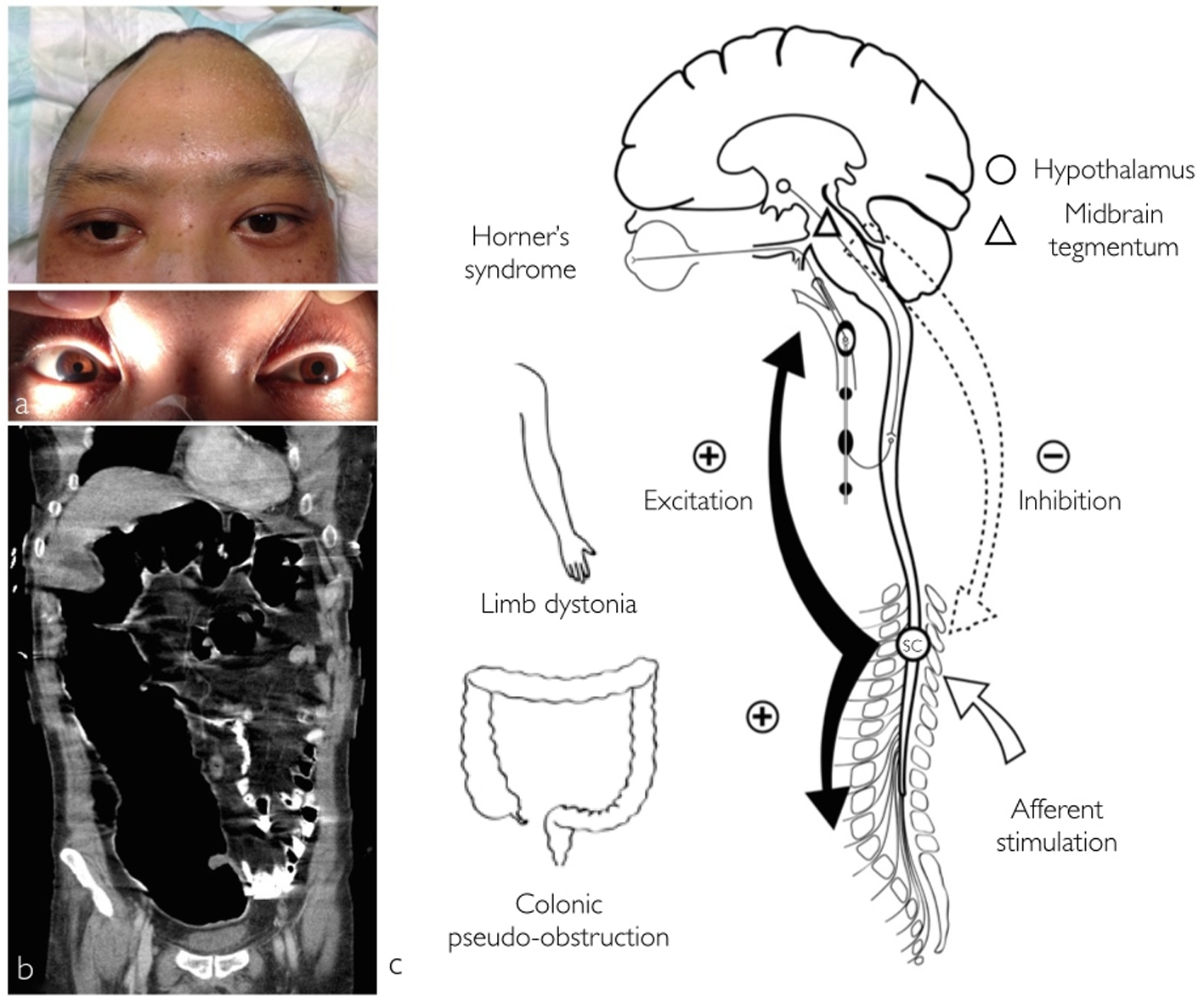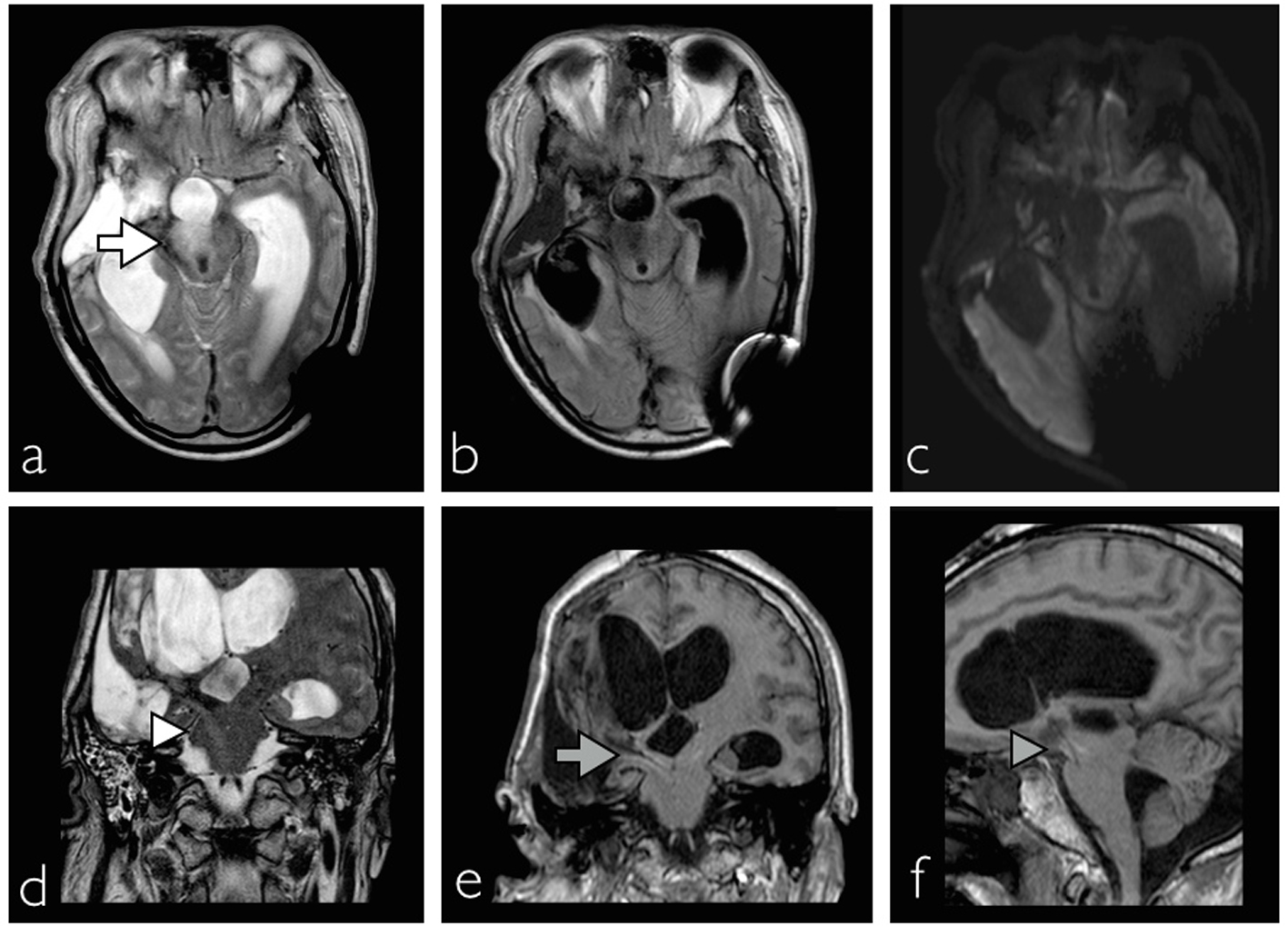
Figure 1. Photographs displaying right side Horner’s syndrome with right hemifacial anhidrosis and left hemihyperhidrosis. Partial eyelid ptosis and meiosis was also observed (a). Acute colonic pseudo-obstruction (b) coronal abdominal computed tomography. Schematic illustrating the pathophysiology behind the concomitant occurrence of central Horner’s syndrome, limb dystonia, colonic pseudo-obstruction and PSH (c). A mesencephalic lesion causes disruption of the hypothalamospinal sympathetic pathway produces Horner’s syndrome and according to the EIR model, loss of normal tonic inhibition of spinal centers from the brainstem (dotted-arrow). Due to this disinhibition minor afferent stimulation (white arrow) elicits spinal allodynia and diffuse spinal cord excitation (black arrow) with PSH (SC, spinal cord center).
